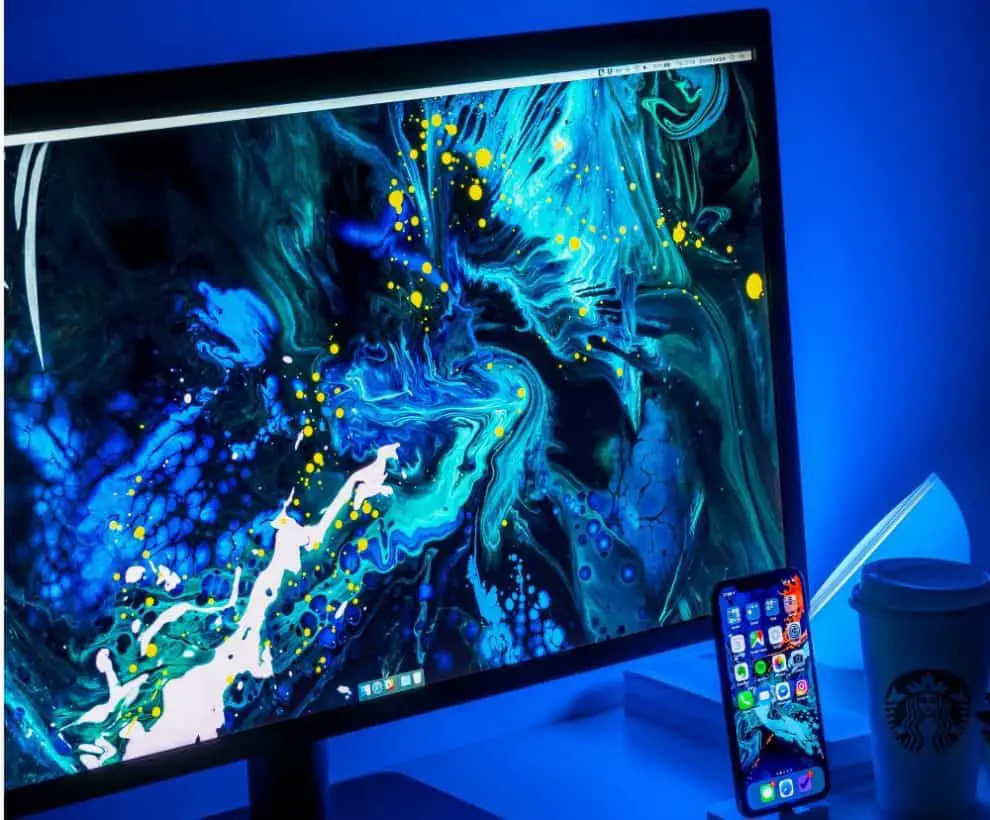
Want to excel in the world of gaming but don’t know how to? Do you fear entering competitive gaming competitions just because you do not know what necessary equipment to purchase in order to ensure a good refresh rate? We’re here to answer all your questions and provide you a guide on the best refresh rate and how to acquire it.
Virtual gaming is an eSport that’s dependent upon a lot of factors, one of them being the refresh rate. A refresh rate is basically how many times per second a screen refreshes the image. This differs from FPS (frames per second) which is the number of frames that appear on the screen in a certain amount of time.
An efficient refresh rate is one that refreshes at a higher rate per second on the PC/TV. A standard is 60Hz; however, some gaming monitors are known to have refresh rates 144Hz and higher.
For all the gamers out there, having a good refresh rate for your PC is extremely important where competitive gaming is concerned. It’s a vantage point that could give any gamer a leverage over all the others and ensure a steady victory.
So if you want to earn the bragging rights that come with victory, and stand out amongst your peers, read on to know more about what a good refresh rate actually is, and how you can better improve your gaming monitor refresh rate in order to make your gaming experience stand out.
What exactly do we need for a good refresh rate?
There are some factors you need to keep in mind when aiming for a better refresh rate while conducting your purchases. The two recurring factors that affect your refresh rates are:
- Up-to-date monitor (capable of running higher refresh rates)
- An updated Graphics Processing Unit (capable of handling the high refresh rate monitor)
Video - 60hz VS 144hz VS 240hz
Why do I need a good refresh rate?
Why is a refresh rate so important where gaming is concerned? A good refresh rate can, at most times be the difference between a winner and a loser in competitive gaming.
We usually don’t realize how something deemed this trivial could have an impact on the victors of any virtual battle or competition, but when you’re knee deep in a one on one with an adversary or foe online, every little thing counts.
Here are some of the problems or discrepancies you might have faced regarding refresh rates while gaming:
- Clashing technologies:
First of all, your screen needs to be able to support the high refresh rate you want to run your video games on. Plus a powerful GPU (hardware that renders graphics) that can run games at higher FPS (frames per second that the GPU can output). For example, if your GPU can run a game at 240 FPS but your screen only supports 60Hz you only see 60 FPS instead of the 240. In layman terms; if the game is very new and your GPU is a little older it won't be able to give you 240 FPS. So we can say that refresh rates are highly dependent on how in sync your technology (hardware plus software) is. Both should be up-to-date in order to keep up, and one should not be a hindrance to the other. - Glitches and flickers:
Today standards TVs have a 60 Hz refresh rate. However, gaming monitors have 144Hz. You'd want at least 120Hz for gaming purposes otherwise the experience would just be very mundane and there would be glitches on your screen because of your hardware being unable to run the high quality video game you’re trying to load on it. This is the problem with low refresh monitors. On the contrary, the downside of high refresh monitors is, let's say your monitor has a 144Hz refresh rate. If your GPU makes less FPS than 144, your display will start to stutter, causing your game to lag, loading the frames and images slower than normal. This will eventually tire out your eyes more than normal, hence causing your eyesight to weaken faster than it normally would have. - Eye strain and fatigue:
With lower refresh rates your eyes have to focus a lot on the minutest of details when gaming. So every moment while playing that would’ve caught your eye very easily had you been using a high refresh monitor now escapes your gaze as you now have to strain your eyes to focus. Furthermore, because of the glitches and flickers mentioned above your eyesight will weaken leading to more eye problems than necessary.
Advantage of a good refresh rate:
The most important question still remains: Why do you need a better refresh rate for gaming anyways? If the aforementioned problems concerning refresh rates weren’t enough to convince you, maybe the advantages will sway your opinion:
- Clarity: A refresh rate is a measure of the amount of images being refreshed on the display. So a higher refresh rate ensures that the subsequent images produced from the graphics card don’t get blurred.
- Fluency: A higher refresh rate (120Hz or more) will feel smoother since it can load more FPS and images per second; this will counter the motion blur problem.
- Time saving: A higher refresh rate ensures that more images are loaded in the same time it would take for a lower refresh rate to load those images. Hence saving more time in the long run.
- Competitive gaming: Higher frame rates are very important and helpful in competitive gaming, because essentially higher frames mean more data loading onto your screen in minimal time. Hence you can make decisions pertaining to the game quicker than any of your peers.For example; at a 240Hz screen you’re getting the image delivered to you 4 times faster than a standard 60Hz screen.
- Lower latency: A lower latency means you see things faster, per se if you’re at 240 FPS, you’ll see every tiny movement. This also means lesser frames will be skipped when compared to the standard 60Hz screen.
- Less eye fatigue: With a higher refresh rate TV/monitor, you don’t have to focus a lot on the images since they’re significantly clearer and smoother than a standard refresh rate monitor, hence your eyesight will also be saved from further straining and damage. The lack of glitches and lag that come with a high refresh rate monitor also ensures you don’t tire out your eyes while gaming.
How to get the best refresh rate:
Now that we’ve listed all the advantages and disadvantages, it’s clear why the need for a good refresh rate monitor arises where gaming is concerned. If you’re still confused as to how to get a good refresh rate, let us guide you step by step:
Step 1: Evaluate your budget
When making a purchase it’s always important to evaluate your own budget and how much you can actually afford. If you have more cash on hand then you should definitely go for the monitors with a 240Hz refresh rate, costs spanning over 699$. However, with a normal budget you can purchase a 144Hz monitor quite easily, whose prices will range from 399$ to 699$.
Step 2: Research
While deciding on a purchase it’s important to research first to find the best alternative options that fit your needs. Luckily, we’ve done the research for you! Here’s a few of the options we’ve shortlisted based on a high, medium, and low budget with their respective refresh rates in mind:
- ASUS ROG swift (high budget): Being a very expensive gaming monitor it’s no surprise that this monitor has a refresh rate of 360Hz, which makes it one of the very best out there in the gaming world. Currently this monitor is priced around $860 (approximately). Along with its impeccable refresh rate, it also offers a fast processing and smooth gaming experience because of its high resolution and color accuracy.
Read our ASUS ROG Swift monitor review>> - Alienware 25 gaming monitor (medium budget): This gaming monitor manufactured under the Dell Company has a refresh rate of 240Hz. Priced at $329.99; this monitor offers great color coverage as well as a dynamic screen display which is sure to stimulate your competitive games as well. There are also other varieties in the 240Hz section that can be explored if needed.
Read our Alienware 25inch monitor review>> - ACER XFA240 (low budget): Extremely affordable, this PC is a must have if you want a low budget monitor that also does the job. At 144Hz, the refresh rate is decent at the current price of $199.99. Furthermore, this PC, however being small, provides the best color display along with a good graphic card.
Read our Acer XFA240 monitor review>>
These 3 are hands down the best in the market right now; however, these are just some of the choices amongst many in the gaming world and the tech industry. Other monitors with varying prices are easily available according to your budget and other requirements.
Step 3: Make your purchase
The very last thing you need to do is to now make your purchase, and enjoy your gaming experience to the fullest. By now we hope you’ll have a good idea on how to choose the best gaming monitor to maximize your gaming experience.
